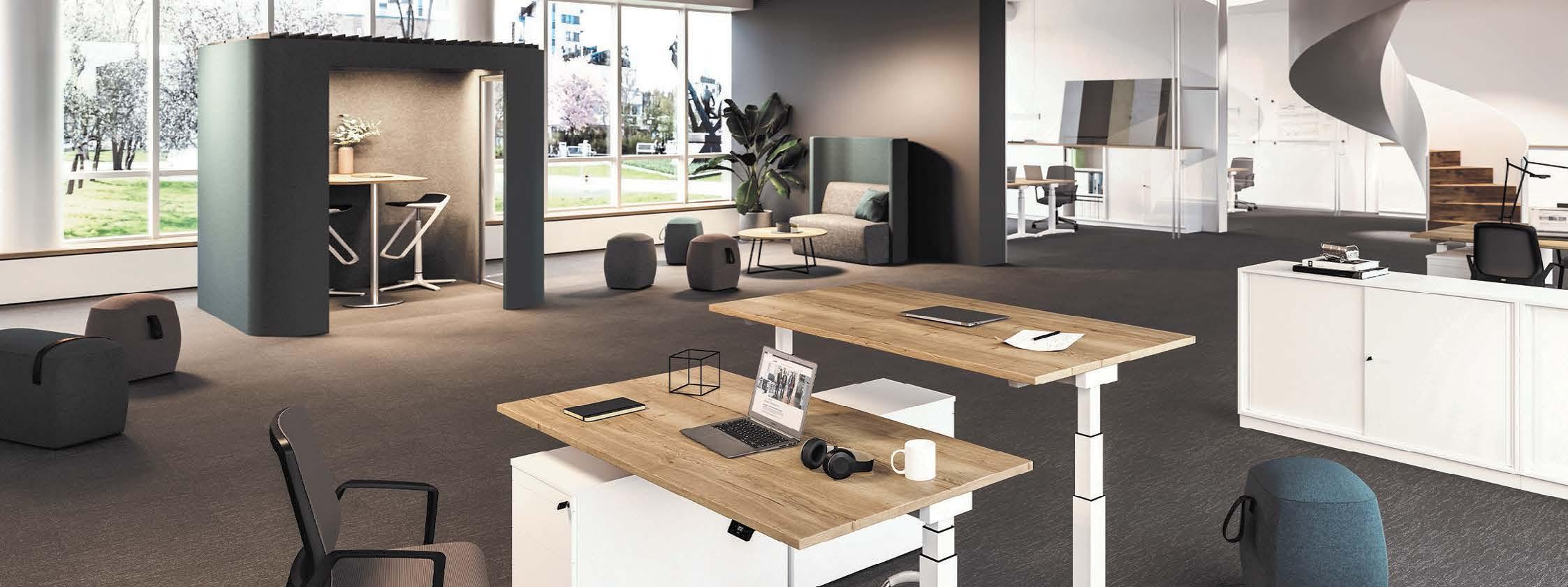
4 minute read
Gannon Office Solutions
Gannon Office Solutions is a Celbridge based family firm which is to the forefront of bringing ‘the office of the future’ to you and how we will work safely and comfortably both at home and in offices all over the country. They currently work with sole operators, small Irish companies and multinationals employing 12 people but few people know it all started exactly 40 years ago when Barry Gannon started the business on his own as a stationery and furniture shop on the main street of Lucan. Barry’s first employee was his wife Patricia whom he brought into the business whilst on maternity leave from her then job when she had their son Eoin and together, they grew the business to the point where the aforementioned son, Eoin, was handed the reins in a smooth transition two years ago. Importantly for the business Barry made sure that Eoin got plenty of experience elsewhere before allowing him to re-join the company back in 2012 as Operations Manager and the company has since been going from strength to strength and expanding the business into many different sectors around the country. Currently the company serves clients from one person operations to SMEs with offices typically holding 4 to 50 employees to large multinationals with 2,000 employees and over. Offices in the home and in the larger workplaces have been revolutionised over just the past 3 years as employers strive to retain employees and make their workplaces more homely and welcoming, creating communities which fosters more collaboration and hence more productivity. Now all this is set to change again with the pandemic induced necessity and encouragement of remote working where the employer is duty bound to make sure their employees have everything they need to work safely and comfortably with all the correct ergonomics.
So, what will the office of the future look like when we’re allowed to go back on a full or part time basis?
Post pandemic landscape:
The COVID 19 pandemic has become the catalyst to a number of changes that were expected to take place within the workplace over the coming years. Improvements in technology (video conferencing, file sharing etc.) had promised a mechanism for remote working, however, the concept had not been widely tested.
A year into the pandemic, these systems have been well and truly tested!! While this sudden change in our working life has been stressful at times, technology has facilitated employees to work productively from home/remote locations.

40

YEARS
IN BUSINESS

Is the office dead?
No, but then again, neither is the home office. Remote working has allowed employees to work effectively from another location. While this has been ideal for some (no commute, reduced costs etc.), some people have not enjoyed the experience. Feelings of isolation, stress (why isn’t this f***in thing connecting????) and musculoskeletal issues associated with poor working environments have increased during the pandemic.
Numerous surveys have indicated that while some will prefer to remain working from home full time (range 15 – 25%), the majority intend to return to the office once open.
Hybrid working:
Of those who plan to return to the office (circa 75% of the workforce), 25% intend to remain in the office full time, while the remaining 50% intend to mix their time working remotely and from the office, a term known as “hybrid working”.
Home working.
As mentioned earlier, home working is here to stay, however, this will be more flexible for employees and will help to facilitate a greater work-life balance.
It is expected that as hybrid working becomes a more permanent feature within society, employers will be required to provide the same working experience for employees at home as they do within the office. Employers (if they have not already done so) will be required to provide appropriate ergonomic work equipment and IT infrastructure for their employees to work from home.
How will this affect the traditional office layouts?
The change in working habits will have a profound impact on the office environment in the future. New working norms (increased desire for personal space due to social distancing) and trying to entice some employees back to the office will force companies to change how their office will look. We may see a return to more traditional style desk and pod working to allow employees more “elbow room” and spacing between their peers.
Increasingly, the main purpose for the office will be to provide an exciting venue to foster a sense of community, knowledge transfer, collaboration and to promote the company’s unique culture. Features such as gyms, full food service and creativity zones, once only the privilege of big tech companies, will become more commonplace. Meeting rooms will increasingly feature technology that will connect on-site employees with remote workers to lessen the disadvantages of virtually joining a meeting and maintain this sense of community within the community when not on-site.
Employees in the office will spend less time on individual work (“me” work), which can be completed at home and more time on collaborative tasks (“we” work). This increased focus on collaboration, networking and socialising will be key re-engaging with employees, fostering creativity and overcoming the feeling of isolation which has proved difficult for some during the pandemic.
So, what does the future workplace look like?
The landscape is still constantly changing, however it is anticipated that future workplaces will offer employees a better and more flexible environment to work in. If you require any help or advise with either your office or home office, feel free to contact me.









